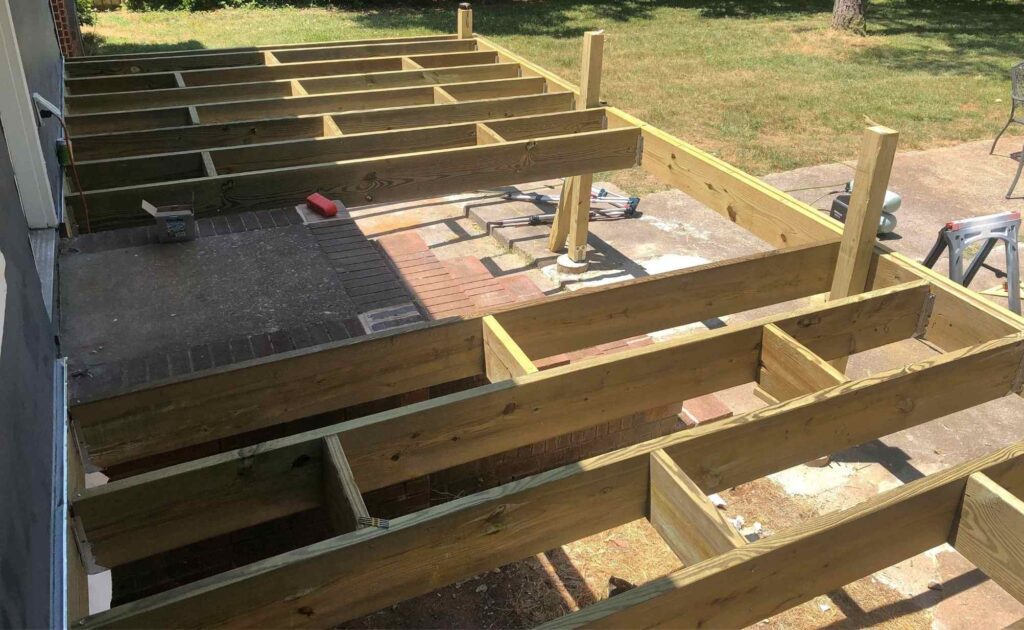The Cost of Composite Decking by Square Foot: A Comprehensive Guide
When considering decking materials for your home, one of the most popular options is composite decking. This engineered material is known for its durability, low-maintenance features, and attractive appearance. However, as with any home improvement project, one of the key factors to consider is the cost. Understanding the cost of composite decking by square foot can help homeowners make informed decisions about their outdoor living space.
In this article, we’ll explore the various factors that influence the cost of composite decking, the benefits of choosing composite over traditional wood, and provide an overview of typical costs based on square footage.
What is Composite Decking?
Composite decking is made from a blend of wood fibers and plastic (typically recycled). This combination gives it the look of wood but the durability of plastic, making it resistant to issues like rot, splintering, and insect infestations. Composite boards can be made to look like different types of wood, including cedar, redwood, and tropical hardwoods.
Unlike traditional wood decking, composite decking doesn’t need to be stained or sealed regularly, and it is usually designed to withstand the elements better. It’s considered a more eco-friendly option because many composite products are made from recycled materials.
Factors That Affect the Cost of Composite Decking
The composite deck costs can vary significantly based on several key factors. These include:
1. Brand and Manufacturer
The brand and quality of composite decking materials can have a significant impact on the price. Major manufacturers like Trex, TimberTech, and Fiberon produce composite boards at different price points, with premium products offering additional features such as better warranties, enhanced durability, and more realistic wood finishes.
- Entry-Level Brands: These offer more affordable options but may have fewer color and texture options and a shorter lifespan.
- Mid-Range Brands: These typically offer a balance of quality and price, with improved durability, aesthetics, and longer warranties.
- Premium Brands: High-end composite decking brands tend to be more expensive but offer superior features such as enhanced fade resistance, scratch resistance, and more realistic wood finishes.
2. Material Composition
Composite decking is available in various compositions, with differences in the amount of wood versus plastic used. Generally, the more wood content in the material, the lower the cost will be, but the durability and resistance to wear and tear may be less. Boards with a higher plastic content are often more expensive but provide better longevity and resistance to elements.
- Capped Composite Decking: This is a high-performance decking option where the core is made of a wood-plastic composite, and the outside is capped with a thin layer of durable plastic. Capped decking is typically more expensive than uncapped options but offers better protection against UV rays, moisture, and staining.
3. Board Size and Design
Composite decking is available in different sizes, typically ranging from 12 to 16 feet in length. Longer boards are more expensive due to their larger size. Moreover, some decking materials come with intricate designs or textured surfaces that mimic wood grain or exotic hardwoods, which can add to the overall cost. Beveled edges or hidden fastening systems (which provide a cleaner, more aesthetic finish) can also contribute to the cost.
4. Decking Features
Additional features like anti-slip surfaces, UV protection, scratch resistance, or fade resistance can increase the cost. Composite boards with enhanced features tend to have longer lifespans and require less maintenance, which can be a good investment in the long run, but these benefits come at a higher initial cost.
5. Installation Costs
The cost of installing composite decking is another important consideration. Many homeowners opt to hire professional deck installers to ensure proper installation and to save time. The cost of installation can vary based on the complexity of the design, labor rates in your area, and whether or not any old decking needs to be removed. Some homeowners may choose to install the decking themselves to save on labor costs, but this requires a fair amount of DIY knowledge and skill.
6. Location and Supply Chain Factors
Regional price differences and availability can also influence the cost of composite decking. In areas with high demand or limited supply, prices may be higher. Additionally, shipping fees for large quantities of composite decking materials can add to the total cost of the project.
Average Cost of Composite Decking by Square Foot
While the cost of composite decking can vary greatly depending on the factors mentioned above, here is a general breakdown of costs per square foot for materials:
- Basic Composite Decking: Typically ranges from $3 to $6 per square foot. This is usually the entry-level material with fewer features like less resistance to fading or scratching.
- Mid-Range Composite Decking: The cost for these materials typically ranges from $6 to $10 per square foot. These options offer a balance of durability, aesthetics, and warranty. Many mid-range products also come with a capped layer for additional protection.
- Premium Composite Decking: Premium boards can cost $10 to $15 per square foot or more. These options are highly durable, often feature hidden fasteners, and come with warranties of up to 25 years or more. They may also have more advanced features like enhanced fade resistance, a more realistic wood-like appearance, or improved anti-slip properties.
Additional Costs
In addition to the cost of composite decking materials, homeowners will need to budget for several other potential expenses:
- Substructure and Framing: If the deck frame is not in good condition or if you are building a deck from scratch, you may need to replace or build a new substructure. The cost of wood for framing or supports can range from $3 to $7 per square foot, depending on the material used (e.g., treated lumber or steel framing).
- Labor Costs: Professional installation can cost anywhere from $5 to $15 per square foot, depending on the complexity of the deck design and local labor rates.
- Fasteners and Accessories: Hidden fastener systems, which provide a clean look without visible screws, may add another $2 to $5 per square foot. Additionally, accessories like railings, steps, and lighting will increase the overall project cost.
Example: Total Cost of Composite Decking for a 300-Square-Foot Deck
Let’s assume you are building a 300-square-foot deck with mid-range composite decking that costs $8 per square foot.
- Decking Material: 300 square feet x $8 = $2,400
- Installation (Labor): 300 square feet x $7 (mid-range labor cost) = $2,100
- Substructure and Framing: 300 square feet x $4 = $1,200
Total Estimated Cost: $2,400 (materials) + $2,100 (labor) + $1,200 (substructure) = $5,700
This is a general estimate, and the final price may vary depending on the specific conditions of your project, the quality of materials, and labor rates in your area.
Is Composite Decking Worth the Cost?
While composite decking tends to have a higher initial cost than traditional wood, it can offer substantial savings over time due to its low-maintenance nature and durability. Composite decking does not need to be sanded, stained, or sealed regularly, and it resists damage from rot, insects, and weather. For many homeowners, these long-term savings outweigh the initial investment.
Moreover, composite decking typically comes with long warranties (20 to 30 years) and can increase the resale value of your home due to its aesthetic appeal and low-maintenance benefits.
Conclusion
The cost of composite decking by square foot can vary depending on several factors, including the brand, material composition, installation requirements, and additional features. While the initial investment can be higher than traditional wood decking, composite decking offers significant advantages in terms of durability, low-maintenance care, and long-term value. By understanding the factors that influence the cost and evaluating your budget and needs, you can make an informed decision and create an outdoor living space that fits both your style and your budget.



